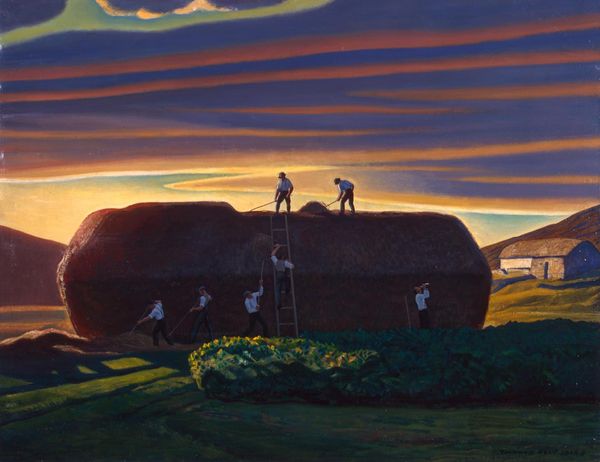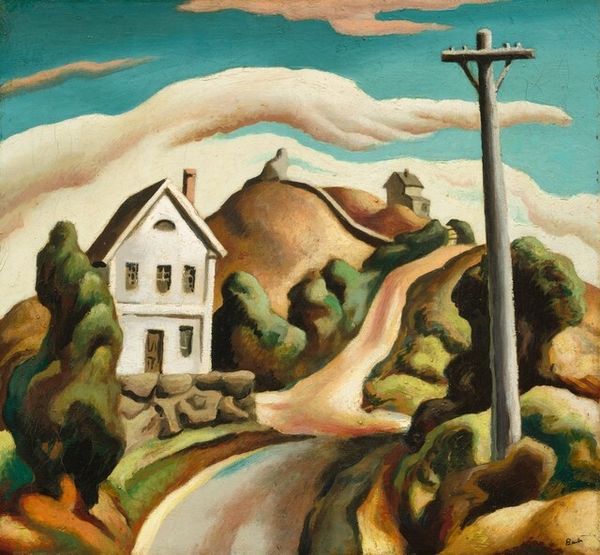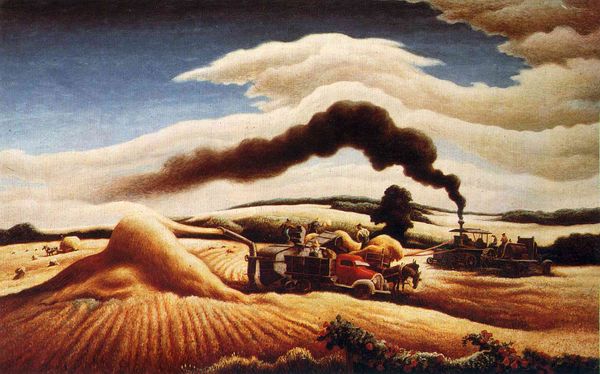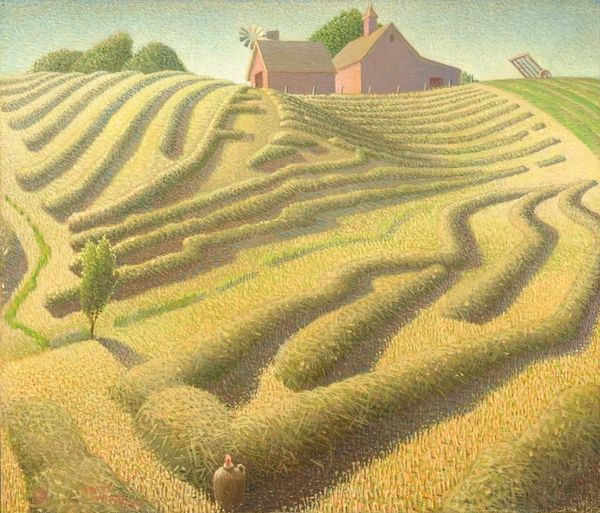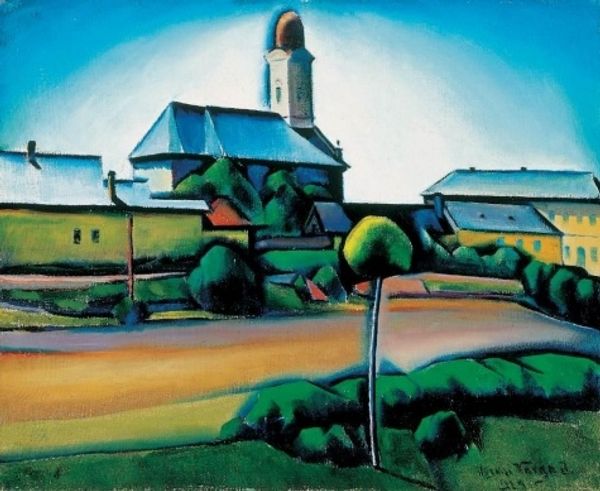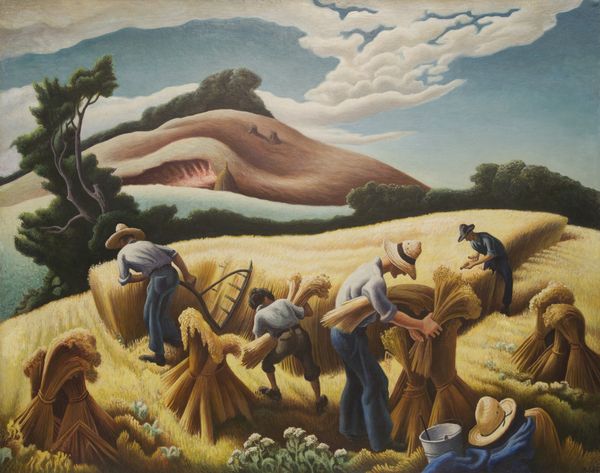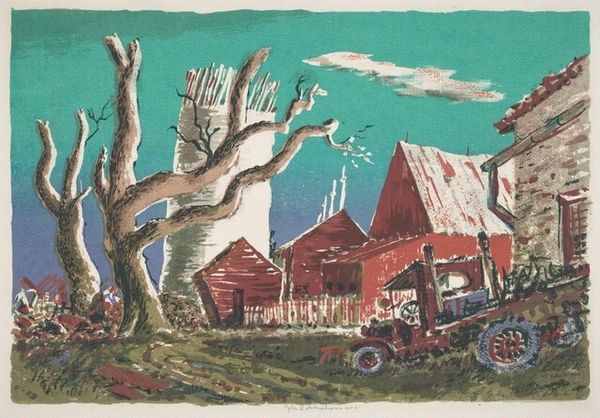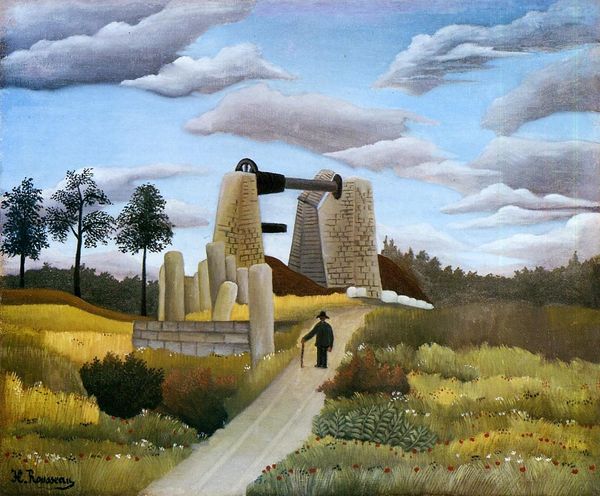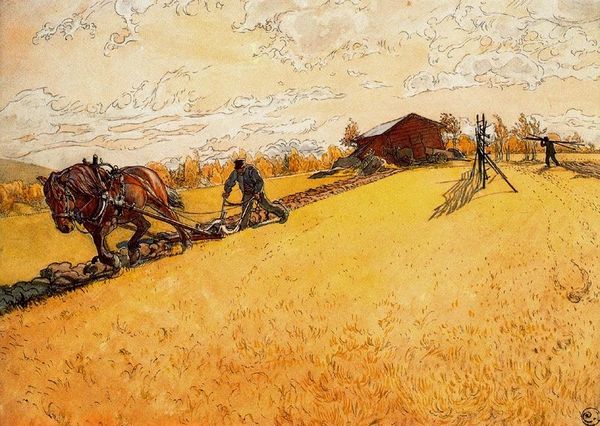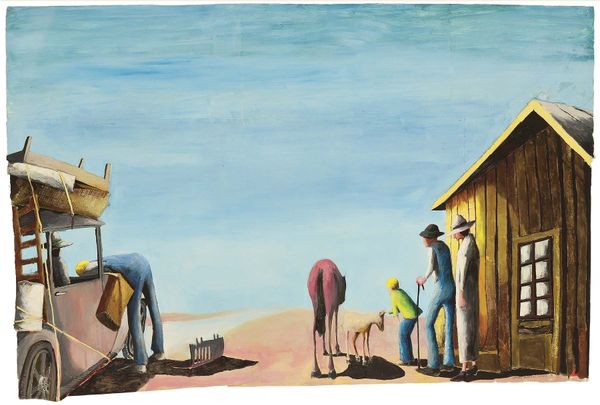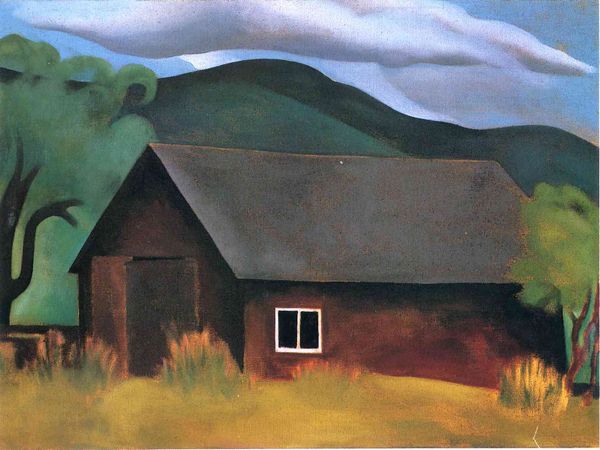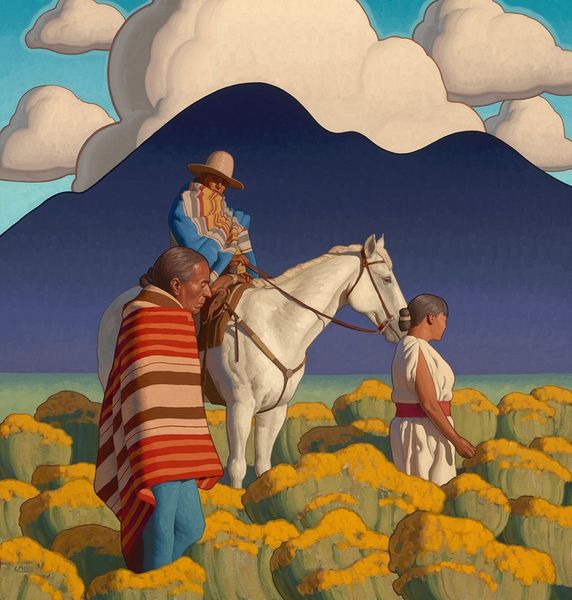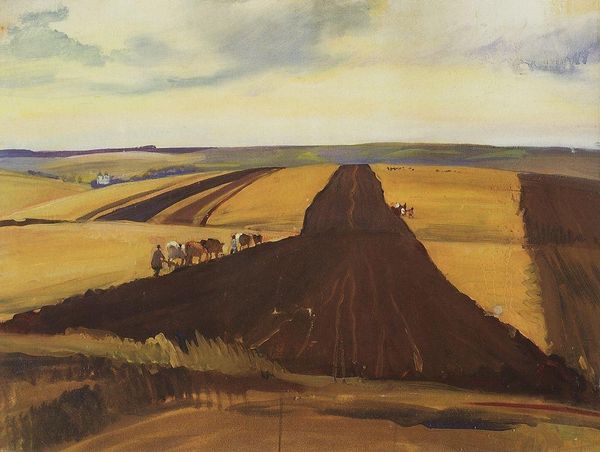
painting, oil-paint
#
painting
#
oil-paint
#
landscape
#
oil painting
#
genre-painting
#
modernism
#
regionalism
#
realism
Dimensions: overall: 52.1 x 74.9 cm (20 1/2 x 29 1/2 in.) framed: 71.1 x 94 x 4.8 cm (28 x 37 x 1 7/8 in.)
Copyright: National Gallery of Art: CC0 1.0
Curator: "Corn and Winter Wheat," an oil painting completed in 1948 by Thomas Hart Benton, provides us with a distinct image of rural America. Editor: It strikes me immediately with a sense of grounded labor; those heavy-looking bundles of wheat and the figures working the field exude physical effort. Curator: Indeed. Benton was a key figure in the Regionalism movement, consciously turning away from European abstraction to focus on American subjects, particularly the lives and landscapes of the Midwest and South. He saw beauty and significance in the everyday. The painting gives presence to labor. Editor: Considering Benton's emphasis on subject and the reality, it’s intriguing how stylized he’s made the scene. The rhythmic arrangements of the sheaves, the swirling lines in the fields, even the muscular curves of the sky—it seems to elevate ordinary farm labor to an almost mythical level, transforming wheat to gold. Curator: That stylized approach also aligns with the social and political context of the time. Following the Depression, there was a need to portray America as self-sufficient, rooted in its land. This narrative of resilience through hard work ties directly to ideas of national identity and cultural pride. I see the use of the color as reflecting prosperity in the new era. Editor: Speaking of hard work, look at the texture Benton achieves with his materials! The physicality of oil paint emphasizes the subject and suggests the tangibility and mass of the land and its yield. It's heavy and earthy; you can practically smell the hay and soil, and experience it from that sensorial viewpoint. Curator: You make a keen point about the texture contributing to its tangible feeling of place. It encourages reflection, beyond merely viewing a pretty landscape. Are there inequities inherent in this vision, questions surrounding whose labor is visible, and whose isn’t? How are concepts like value or consumption addressed, given that Benton focuses on laboring to provide essential products? Editor: It's almost like Benton understood how the making is as significant as the finished product and is seeking for us to understand labor as the basis for value, as well as something requiring critical inquiry. Curator: Precisely! By analyzing how Benton depicts work and the land in the 1940s, we are then also equipped to ask questions of today's world and labor, through this representation. Editor: Well, I will depart knowing my respect has grown for Benton, who makes such clear the importance of working hard with essential materials and resources. Curator: I appreciate your materialist perspectives, as they enriched how I’ll reflect on Regionalism’s wider cultural narrative from now on.
Comments
No comments
Be the first to comment and join the conversation on the ultimate creative platform.
